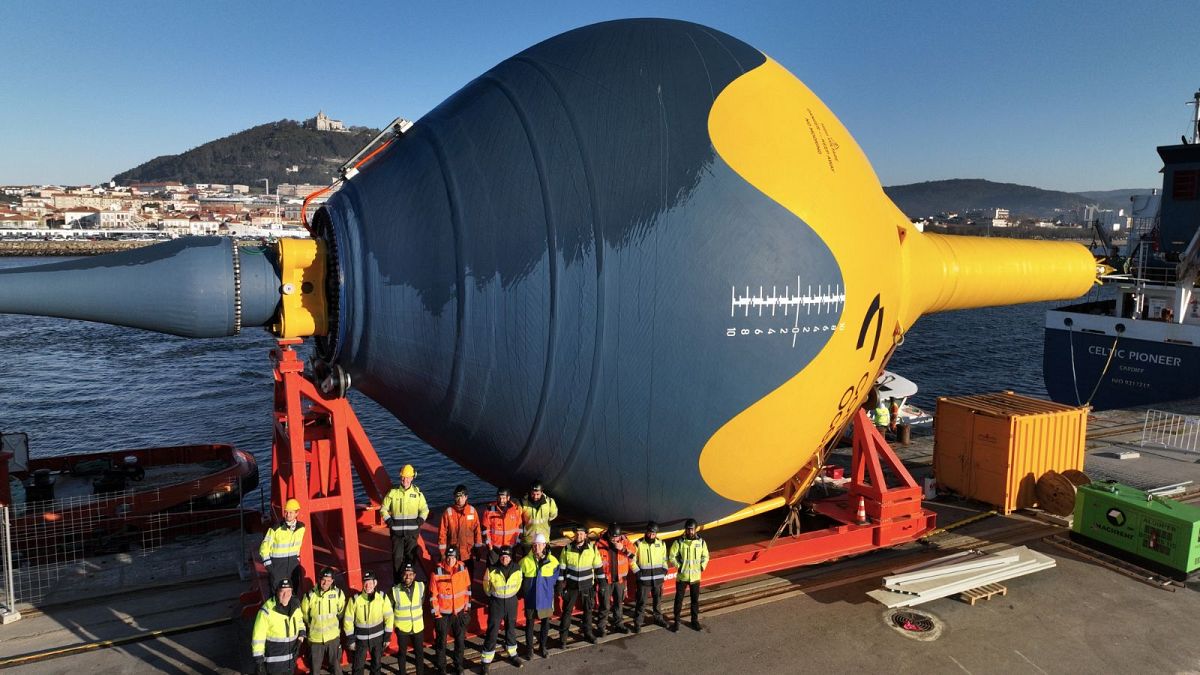European countries with strong Atlantic swells like Spain, France and Ireland have the most wave energy potential.
Covering 71 per cent of the Earth’s surface, oceans are one of the world’s most valuable and yet largest untapped renewable resources.
Ocean wave energy is immense, with a huge contribution to make to the clean energy transition. According to the International Energy Agency (IEA), ocean power generation needs to grow by 33 per cent per year to achieve a net-zero world by 2050.
“Wave and tidal energy have the potential to be significant, reliable, and sustainable power sources,” says José Miguel Rodrigues, a senior research scientist at SINTEF, one of Europe’s largest research institutes.
The Intergovernmental Panel on Climate Change (IPCC) estimates that wave energy could generate up to 29,500 TWh per year. That’s nearly ten times Europe’s total annual electricity consumption, and more than the global annual electricity generated in 2018.
“Tidal energy has an estimated global potential of 800 – 1,200 TWh, particularly in narrow waterways like inlets and around islands,” says Rodrigues. “Governed by predictable gravitational cycles rather than weather, [tidal energy] provides a steady electricity supply and helps balance the grid.”
The wave energy converter device inspired by the human heart
Heart specialist Dr Stig Lundbäck was inspired by the pumping of the human heart to co-found Swedish wave energy company CorPower Ocean in 2009.
Through years of hydrodynamic research, the company developed ‘CorPack’ – a gigantic buoy made from durable, lightweight materials that converts the movement of waves into clean and stable electricity.
Similar to the heart’s use of hydraulic pressure to pump blood in one direction, CorPack works by applying tension on itself to pull the buoy down, while the waves push it up. The wave motion is turned into rotation, which is then converted into electricity by generators.
The wave energy converter’s mechanism enables a large amount of energy to be harvested using a relatively small and low-cost device, a CorPower Ocean spokesperson explains.
They say the converter is able to deliver more than five times as much electricity per tonne of equipment compared with previous state-of-the-art wave energy.
Rodrigues considers CorPower Ocean’s innovation a significant achievement. “CorPower has steadily progressed through development stages, securing investment and research grants, particularly from the EU,” he says.
“Their structured approach has allowed them to put a device in the water, a significant achievement given the limited funding available for wave and tidal energy in Europe.”
CorPower Ocean’s first full-scale wave energy converter is deployed off the northern coast of Portugal, near Aguçadora, where it is supplying energy to the Portuguese grid.
There are many more companies and research organisations trying to ride the ocean energy wave.
Other notable examples include Italian energy company ENI with its Inertial Sea Wave Energy Converter, the Chinese-built Nanku – a floating generator powered by waves – and Finland-based AW-Energy’s WaveRoller, made up of large underwater panels.
Why does wave energy get less attention than wind and solar?
Solar power generated seven per cent of global energy in 2024, according to the IEA. Over the next two years, solar is forecast to meet nearly half of the world’s electricity demand, while wind energy is expected to fulfil about one third.
Waves have the highest energy density of any renewable source. And although closely tied to wind, they are less ‘variable’ than wind energy. Tidal energy, meanwhile, is considered to be the most predictable of all variable renewable sources.
Despite this potential, wave and tidal tech is lagging behind in the clean energy race.
“The key challenge is competitiveness,” explains Rodrigues. “Unlike wind and solar, wave and tidal energy have yet to demonstrate commercially viable technologies at scale.
“Wave energy faces demanding requirements for both consistent performance and the ability to withstand extreme ocean forces. Many prototypes have failed or underperformed, while offshore wind and solar have demonstrated reliability and cost reductions.”
Which European countries have the biggest potential for wave power?
Assessing potential requires considering both the availability of natural energy resources and the feasibility of harnessing them.
“Countries exposed to strong Atlantic swells – Portugal, Spain, France, Ireland, and the UK – have the most favourable conditions for wave energy at utility scale,” says Rodrigues.
“Norway, with its extensive coastline and many remote island communities, presents a strong market where wave energy could help reduce grid costs and enhance energy independence.”
Beyond technical feasibility, success depends on economic viability, social acceptance, and supportive policies.

